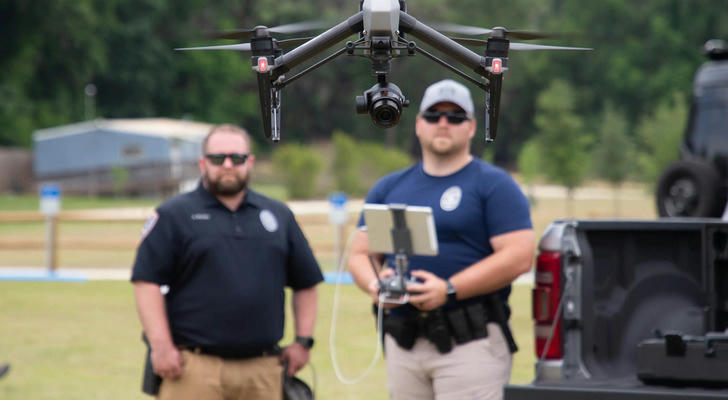Zero to FAA Certification: A Beginner's Guide to Passing the Exam
Becoming a certified pilot through the FAA exam is a goal many aviation enthusiasts aim for. However, for those with no prior experience, it can seem like an overwhelming challenge. With the right study plan, beginners can approach the FAA exam with confidence and success. This guide will help create a clear, actionable path to achieving that dream.

1. Understanding the FAA Exam
The FAA certification process ensures pilots have essential knowledge in aviation safety, regulations, and flight operations. The Private Pilot Certificate (PPL) is typically the first step for beginners.
The FAA exam has two components:
• Written Test (Knowledge Test): This consists of multiple-choice questions covering topics such as regulations, navigation, weather, and aircraft operations.
• Practical Test (Checkride): After passing the written test, you demonstrate flying skills with an FAA examiner.
2. Key Areas Covered in the FAA Exam
The exam content is broad but can be broken down into key topics that are frequently tested:
• Airspace and Regulations: Airspace classes (A, B, C, D, E, G) and their rules are often highlighted.
• Aircraft Performance: Understanding weight, balance, and how these factors influence flight is essential.
• Weather Interpretation: Being able to read METAR and TAF reports is vital. Knowledge of cloud types, weather patterns, and turbulence will also help.
• Navigation: The exam tests your ability to read charts, use VORs, and understand GPS navigation.
3. Creating a Study Plan
The key to passing the FAA written test is consistent and focused study. Here’s how to structure your plan:
• Set Achievable Goals: Aim to study 1-2 hours per day. Regular, consistent study is more effective than sporadic cramming.
• Use Study Materials: Resources like Sporty’s Pilot Shop and King Schools offer courses specifically for the FAA exam, including videos, practice tests, and quizzes.
• Break Topics into Chunks: Split the material into smaller sections. Start with airspace and regulations, move to weather, then aircraft performance, and so on. Tackling smaller chunks is less overwhelming.
• Take Practice Tests: These will help you familiarize yourself with the format and types of questions you’ll face.

4. Effective Study Tips for Beginners
Some strategies will help you maximize your study efficiency:
• Visual Learning: Use charts, diagrams, and videos to reinforce concepts. Visual aids make complex information more digestible.
• Focus on Understanding, Not Just Memorization: Aim to grasp the reasoning behind each rule or procedure, not just memorize facts. For instance, knowing why certain airspace rules exist will help you recall them more easily.
• Mix Study Methods: Reading, watching videos, and taking quizzes will keep your study sessions varied and engaging.
• Stay Consistent: Set a daily study routine. Repetition helps reinforce information and solidifies concepts.
5. Staying Motivated and Tracking Progress
Maintaining motivation is crucial throughout the study process. Here’s how to stay on track:
• Track Progress: Keep a study journal or checklist to note which topics you’ve completed. This provides a sense of accomplishment.
• Take Breaks: Short breaks between study sessions can improve focus and retention. Studies show that spaced learning increases long-term memory.
• Join a Study Group: Connecting with others preparing for the exam can offer support, share tips, and provide motivation.
6. Time Management and Test Day Preparation
The FAA written exam consists of 60 multiple-choice questions to be completed in 2.5 hours. To improve time management:
• Practice Under Time Pressure: Simulate test conditions with practice exams to get used to answering questions within the time limit.
• Stay Calm on Exam Day: Ensure you bring necessary identification and documents. Read each question carefully and don’t rush. If unsure about a question, skip it and return to it later.
7. Third-Party Data and Success Rates
According to data from the FAA and AOPA (Aircraft Owners and Pilots Association), nearly 80% of those who complete structured, focused study programs pass the written exam on their first attempt. This success rate is significantly higher compared to those who attempt the test without a clear plan or consistent study habits. Additionally, studies have shown that candidates who use practice tests score an average of 15% higher than those who don’t. These findings highlight the importance of preparation and strategic studying.
8. Final Thoughts: Stay Focused and Ready for the Skies
The journey to FAA certification might seem daunting, but with a strategic approach, it’s entirely achievable. Stay organized, use resources wisely, and most importantly, stay consistent. Remember, becoming a certified pilot is a step-by-step process, and each study session brings you closer to your goal of soaring through the skies.
Good luck! Your dreams of flying are just one exam away.
